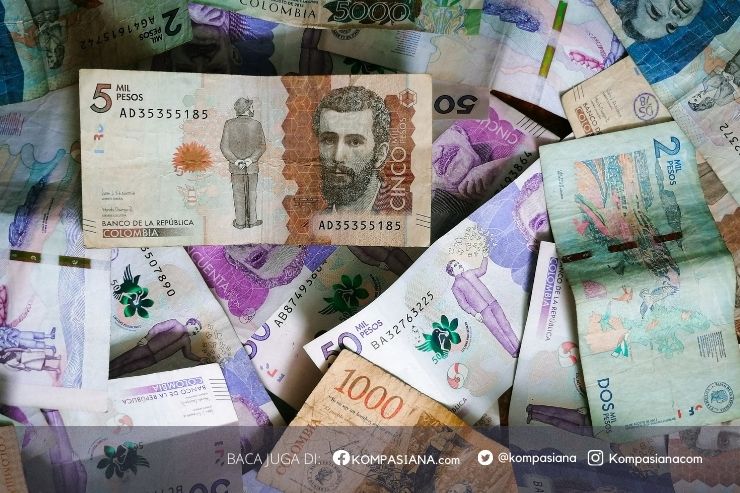In this global era, the cooperatives existence as the backbone of the economy in Indonesia is beginning to be marginalized by the capitalist economic system. As a business organization, cooperative is defined as a business in which customers play a role as businessmen also (Ropke, as cited in Riswan, Suyono, and Eko 2017).
In Indonesia, the cooperatives are based on kinship which the members do the business together in practice. The capital of cooperatives is from the deposit that paid by each member in every month.Each member is entitled to borrow business funds to the cooperative so they are able to develop their own business.
Here, a cooperative plays an important role, especially for rural communities who need capital to meet their basic needs. Therefore this essay will explain the roles of village cooperatives in improving people's welfare as well as the obstacles.
In general, cooperatives function in Indonesia is written in The Law of Republic Indonesia No. 12 the year 1967, where explains four functions of cooperation. First, cooperation function as the tool of economic struggle to enhance the welfare of the people.
The purpose of the economic struggle is that the cooperative existence can help the community to meet their needs through economic activities undertaken by the cooperative, which can improve the economic condition of the community which then impacts on the increase of their welfare.
Second, cooperative function as a tool of national economic democratization. cooperatives are said as a tool of democracy because the structure of cooperatives is considered as a populist economic activity and in accordance with the business entities that are expected in article 33 of the 1945 Constitution.
The third is the cooperative's application serves as one of the artery of the economy in Indonesia. This point is the basis of the plan of the new order government in realizing the cooperative as a pillar of the economy in Indonesia. A large appreciation of the 1945 Constitution in that era made cooperatives continue to be developed to realize the economy as listed in Article 33 of the 1945 Constitution.
Fourth, cooperation plays a role as community development tool to strengthen the economic position of the Indonesian nation and a tool of unity in preparing the economic management of society. These four functions are the background of Villages Unit Cooperative (VUC) establishment at the beginning of the reign of the New Order, which became the VUC as what we see today.
Villages Unit Cooperative emerged to replace The Villages Unit Enterprise (VUE), where the change was stipulated by presidential instruction No. 4 the year 1978. VUC is a type of cooperative that generally in a district which manages several businesses consisting of villagers (Riswan, Suyono, and Eko 2017).
As one type of cooperative, the VUC has the same function as the cooperative function in general.The difference is in the particular function of VUC, that is as an economic medium to support the economy of the villagers.
The specific function of Villages Cooperatives is described by Patil (1960) which said if villages cooperative should be multifunctional and should include financial savings, provision of credit, supplies for agricultural production, consumer requirements and marketing the product. The essence of the VUC is to help the village's community, therefore it is very important for the rural community to improve their welfare.
The spirit of making the cooperative as a cornerstone of the economy began to fade after the reform era. In measure, the number of cooperatives indeed experienced an increase each year, but the percentage of cooperatives categorized as inactive cooperatives continue to increase.
According to data from the Indonesian cooperative department (2016), the percentage of inactive cooperatives in Indonesia reached 29.1% by the end of 2015, a significant increase compared to the year 2000 which was only 13.7%. The VUC condition is similar to the fall of cooperatives in the Indonesian economy.
The stipulation of Presidential Instruction number 18 the year 1998 was the beginning of the VUC decline in Indonesia, the role of VUC to help the economy of rural communities such as providing agricultural raw materials is instead taken over by the market mechanism. This made the VUCs in villages collapse and villagers lost the means to get agricultural needs and to market agricultural products that were forced to rely on the middlemen.
The lack of agricultural support means that farmers have difficulty in processing and producing quality products while marketing the agricultural products to middlemen will be very harmful to them because the price of grain purchases set by the middlemen is usually well below market prices. Consequently, farmers' incomes are sometimes insufficient to fulfill their basic needs. It is necessary to revitalize the role of the VUC to help villagers to meet their welfare.
VUC revitalization efforts are key in restoring the VUC function as early as the business entity establishment. In returning the VUC to the village community, VUC reform is needed by making it as a new structure economic institution capable of providing facilities as well as protection of members' efforts in systematic business (Yuwono, as cited in Ika 2009).
The four VUC Revitalization points listed in the Bulaksumur declaration on August 1, 2009, can be a step-by-step solution to restoring the prosperous of VUC.
The first is an effort to check Presidential Instruction No. 18 the year 1998 about VUC coaching. Policy revitalization is important to restore the cooperatives function as usual.
The second is the reinvolvement of VUC in the distribution of production facilities, food procurement, and rural community economic development programs so that they can be free from middlemen.
The third point is improving the quality of human resources in VUC management through cooperative education, training, and mentoring. This is done to remind the quality of farmers in planting so they can harvest more and increase the quality of the agricultural product.
Then, the fourth is reforming the VUC begin by integrating farmer groups and total farmer groups as one of the organs in the VUC structure. This institutional reform effort is done to strengthen the role of farmers in village cooperatives so that village cooperation can develop according to the potential of these local farmers.
The implementation of these four points of declaration in the development and management of VUC is expected to improve the welfare of the villagers where the majority of them work in the agricultural sector.
The VUC existence for rural communities is vital, especially for those working in the agricultural sector. The role of VUC in improving the village economy can be seen from how the VUC helps farmers to distribute facilities, lend and market products.
Currently, the role of VUC suffers a decline after the presidential instruction enactment No. 18 the year 1998 which resulted in the village communities inhibition in obtaining facilities and marketing products. VUC Revitalization is the best way out in returning the VUC role as it should be. With the village cooperative revitalization, farmers will be facilitated back in his work to earn a greater income, where the increase in income is a major indicator of welfare.
Thus, the VUC existence will be able to improve the welfare of rural communities through the return of functions such as the first goal of its establishment.
References
Departemen Koperasi. 2016. Rekapitulasi Data Keragaan Koperasi Per 31 Desember 2015.http://www.depkop.go.id/pdf-viewer/?p=uploads/tx_rtgfiles/1F_Koperasi_Desember_2015.pdf
Departemen Koperasi. 2010. Rekapitulasi Data Keragaan Koperasi dari Tahun 2000 s.d. 31 Maret 2010. http://www.depkop.go.id/uploads/tx_rtgfiles/kop-2000-2010-desember.pdf
Ika. 2009. Revitalisasi Peran KUD untuk Mensejahterakan Masyarakat Perdesaan. Ugm.ac.id. https://ugm.ac.id/en/berita/680-revitalisasi.peran.kud.untuk.kesejahteraan.masyarakat.pedesaan
Patil, R.K. 1960. Village Cooperatives and Development. The Economic Weekly.
Riswan, Suyono, and Eko. 2017. Revitalization Model for Village Unit Cooperatives In Indonesia. European Reseach Studies Journal.
Undang-undang Republik Indonesia No. 12 tentang pokok-pokok perkoperasian. 1967. www.bphn.go.id/data/documents/67uu012.pdf










